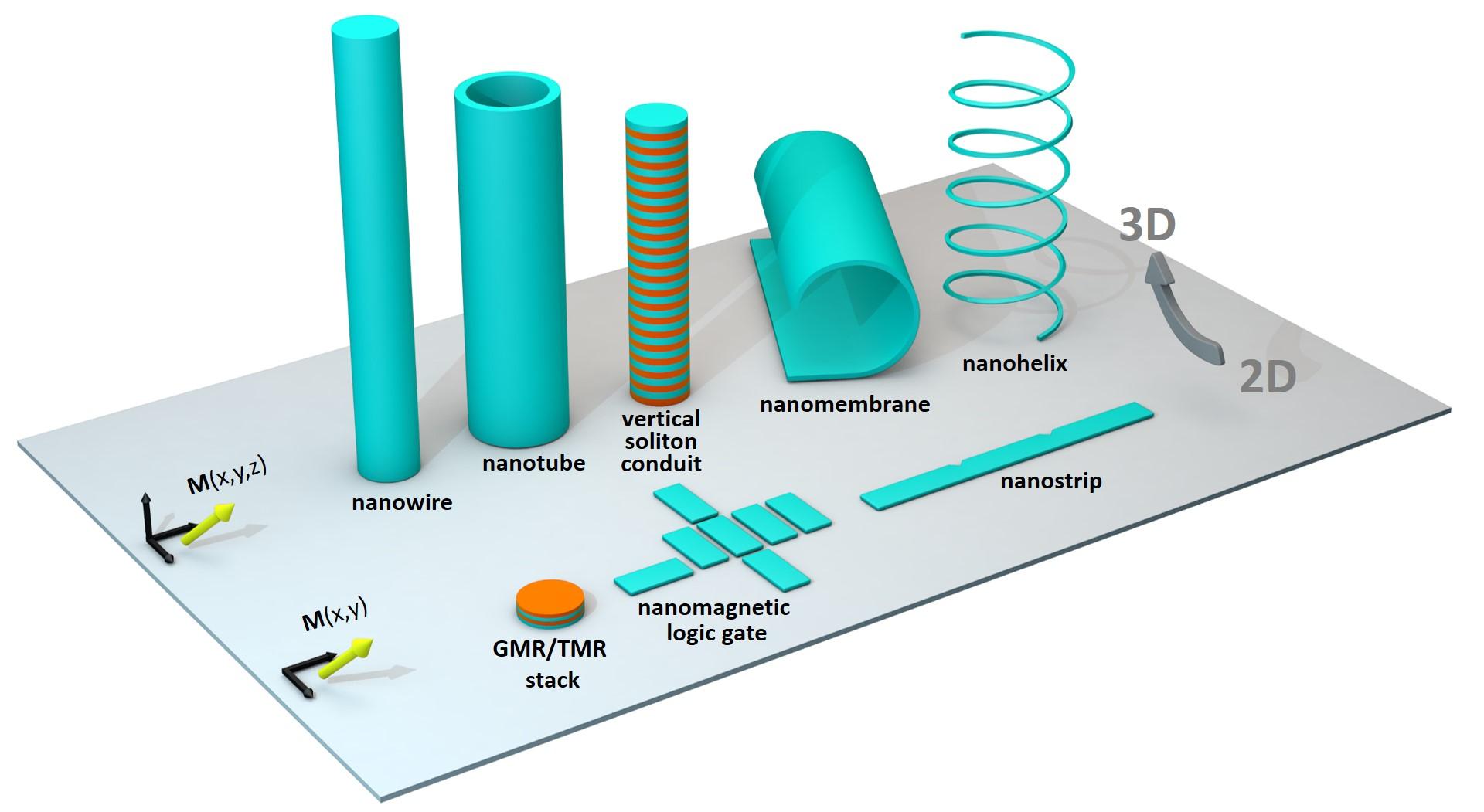
Submitted by Dr Nalin Patel on Wed, 05/07/2017 - 11:43
New fabrication techniques enable three-dimensional magnetic nanostructures to be realised offering opportunities for novel devices
Magnetic nanostructures used in our daily life for computing and sensing, are generally two dimensional, with thicknesses much smaller than lateral sizes. This is due to the type of methods currently used to fabricate them, based on standard lithography and thin film deposition techniques. The development of new nanofabrication methods is now making it possible to create three dimensional nanomagnets for the first time, opening a fascinating new world. In 3D nanomagnets, geometry, topology and chirality may become interlinked, leading to a very rich magnetic behaviour. This magnetic complexity can be exploited in many applications.
In a recent publication in Nature Communications, Winton Fellow Dr Amalio Fernández-Pacheco, together with Prof. Russell Cowburn and other colleagues in France and USA, discuss their recent work, and review the state of the art, of this emerging area.
The leap from 2D to 3D could for instance revolutionise spintronics, the field that exploits both charge and spin of electrons in solid-state devices. Current electronic devices store and transfer data along the 2D plane of the substrate. 3D nanomagnets could lead to integrated systems with bits occupying the whole space, resulting in ultra-high storage and processing capacities. Moreover, these systems exploit thermal and magneto-elastic effects very efficiently; 3D nanomagnets could form part of low power memory and logic devices, as well as sensors and energy harvesters, finding an important role in the development of the Internet of Things.
The publication discusses the emergence of new types of 3D spin textures with special static and dynamic properties controlled by topology, such as Bloch-point domain walls, skyrmions, skyrmionic bubbles and kink solitons. New characterisation and computational methods suitable for probing and modelling 3D nanomagnets, are also reviewed.
For more information, see: Amalio Fernández-Pacheco et al. “Three-dimensional nanomagnetism”. Nature Communications. 8, 15756 (2017). doi: 10.1038/ncomms15756

